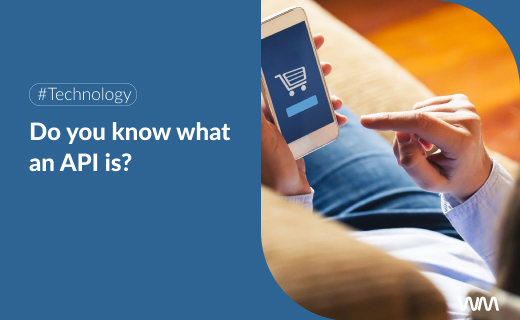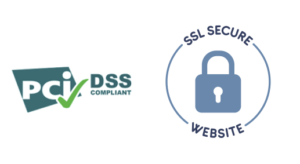Payment API: What It Is, How It Works, and Its Advantages
APIs seem to be known, talked about, or heard of by everyone. But do we really understand their meaning?
APIs have been in the tech world since 2000 when Salesforce launched the first one on the market. Since then, major companies have released their own: Amazon, Flickr, Twitter, Facebook, Google Maps, etc. Following these multinational giants, thousands of companies joined in creating APIs.
What is an API?
Today, there are thousands of APIs (Application Programming Interfaces). APIs can be defined as programs that interconnect different applications and programs. In other words, it’s a technology that allows different programs to communicate without human intervention.
APIs are created by companies to enable external developers to build applications or processes that can improve the use and adoption of their services, whether for data extraction or executing certain operations.
For example, thanks to banking APIs provided by financial institutions, we can now view the details of our bank transactions from third-party applications. Similarly, we can use APIs like those offered by Google Maps to add geolocation services to our application.
As we can see, even if we don’t fully understand what they are, we use them constantly in our daily lives. It has become increasingly necessary to interconnect various systems or platforms with different information to offer better services to end customers.
There are APIs of different natures, depending on the industry in which they are used:
- Financial: PayPal
- Social: Facebook
- Business: Salesforce
- Location: Google Maps
- E-commerce: Amazon
- Administration: World Bank
Or according to their function, as divided by AWS of Amazon:
- SOAP: the simplest, gives access to objects.
- RPC: carries out remote procedures.
- WebSocket: transmits data from one application to another, enabling bidirectional communication.
- REST: the most popular and flexible today. The client sends a request (access, transaction, password change, etc.) in the form of data; after the connection of applications, the server initiates the process internally and returns the result to the client.
Wannme is a financial REST API that enables businesses to connect with their custom payment solutions, manage collections, recurring operations, recoveries, and in specific cases, operations within a Marketplace. One API to integrate it all.
What advantages does an API offer?
One of the keys to the success of modern businesses is both developing a good API to offer our services and integrating the correct API among those offered by service providers. The most important companies in the world have advanced APIs that help them achieve better and greater commercial results than those with basic APIs or those without any.
How do we measure how “adequate” an API is?
An API offers your company a series of tools, and you use them as you like. One way to rate a good API is the number of functions it provides. The more it has, the more options we can develop.
Continuing with utility, an API must be intuitive. It’s useless to spend months learning its processes and functions. APIs improve your business’s internal processes and eliminate human effort.
Also, it should be easy to integrate. Integration must be quick and efficient. With or without the need for code, and understanding or ignoring what an API’s internal processes are, companies need a solution now. Hence, it’s important that it has good documentation explaining how to integrate and use it.
Considering all these characteristics, what advantages does an API offer?
- Digitalization: APIs greatly facilitate the incorporation of new functionalities into an existing company, allowing companies of all kinds to remain competitive in a changing and digital market.
- Increased conversion: Customers will go to your competition if you don’t offer them an updated and convenient service. APIs expand your capabilities to meet growing consumer demands.
- Increased sales: If customers are happy with your service, they are more likely to buy from you and return.
- Connectivity: APIs connect you with your customers through different channels: mobile, web, applications, etc. You stay connected with your customers in their preferred channels.
- Accessibility: Connectivity also means that consumers find you sooner. APIs allow customers to access your company through a specific channel and continue their process on a computer, TV, tablet, etc.
- Efficiency: APIs shorten the steps needed to carry out an action. They automate processes and eliminate human intervention, saving time, money, and effort.
- Flexibility: You control how to use an API’s tools. You decide which ones you want and which ones you don’t, but you always have the others available to adapt to new needs.
- Customization: Consumers should not notice that there is an API in the middle. This is achieved through the agility of processes and the ability to customize the API. APIs can be created and modeled to the company’s liking.
How to use a payment API and example of API
There are countless APIs at your disposal, from geolocation, social networks, web chatbots, e-commerce, payments, etc. When looking for an API, we must think about what our customers need, what we need to be competitive, and what needs we might have in the future.
If you need a payment API, you can trust Wannme.
Wannme is the online payment and collection platform that lets you decide with total freedom which payment methods suit you best. We offer you the most traditional and the newest payment methods and types, with which you can create the payment system you always wanted without knowing programming. Additionally, it includes a series of features that allow you to increase the security of your payments and customize them, making your collections unique.
Do you need to add a payment link to an invoice? Using Wannme’s payment API, you can. When your ERP generates an invoice, it can connect to our API and generate a payment link and/or a QR code to add directly to the invoice so that the client can conveniently make the payment through Pay by link.
We integrate easily into any of your systems: ERP, web, applications, e-commerce, etc., and add all our collection and recovery management power so you can perform your operations in real time and tailor them to your needs. And if you have any questions, our technical team of experts will help you resolve them quickly.
Do you want to know all the potential of our API? Visit our website and discover everything about the API designed for your company and developers. And don’t hesitate to request your free demo.
Follow us on LinkedIn.






